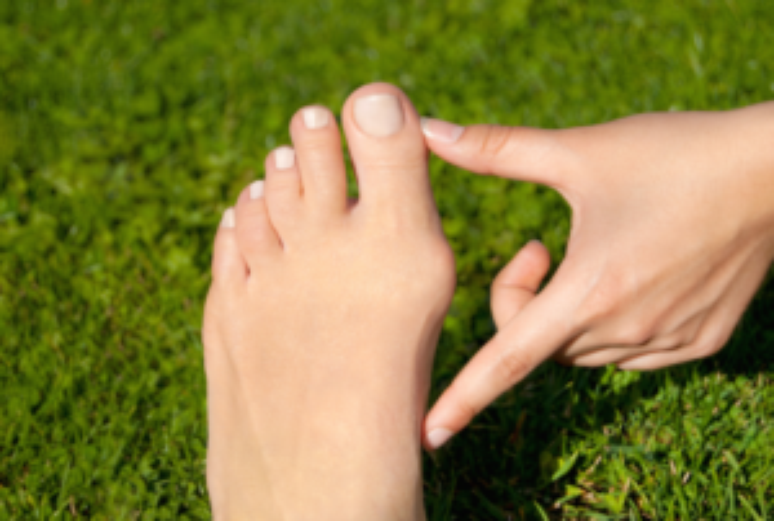The orthopedist presents the main details of the diagnosis and treatment of hallux valgus
You’ve definitely heard of hallux valgus. This type of foot deformity is known to affect many people, especially women. However, its causes are unknown to many, as is its treatment. Additionally, there are a number of popular theories about him. For example, many argue that the frequent use of uncomfortable shoes, such as pointed shoes, is the main cause of this dysfunction. Therefore, thinking of explaining what a hallux valgus is and many of the myths surrounding it, the orthopedist
doctor Bruno Li*
presents some details about its cause, diagnosis and treatment. Read on to know all about bunions.
What is hallux valgus?
Hallux valgus, popularly known as hallux valgus, is a deformity in one of the bones of the foot. It is a relatively common situation that affects many Brazilians, being more common in women, but it can also affect men. In general terms, hallux valgus consists of the opening or deviation of the first metatarsal, which is located near the big toe. In doing so, it will cause a protrusion in that region and as a result, can generate a deviation in the halux (the big toe).
html[data-range=”xlarge”] figure image img.img-286dd3d22084d56698885fd0e1f13bb6cghryepe { width: 774px; height: 521px; }HTML[data-range=”large”] figure image img.img-286dd3d22084d56698885fd0e1f13bb6cghryepe { width: 548px; height: 369px; }HTML[data-range=”small”] figure image img.img-286dd3d22084d56698885fd0e1f13bb6cghryepe, html[data-range=”medium”] figure image img.img-286dd3d22084d56698885fd0e1f13bb6cghryepe { width: 564px; height: 380px; }
With this deformity, the big toe is “bent” inward, so to speak. Thus causing an overload on all other metatarsals. If left untreated, the patient may experience constant pain in the region, for example when he walks. While the above scenario is the most common, it’s not the only one. It is also possible that this deviation occurs in the fifth metatarsal. Therefore, the hallux valgus can arise on the little finger. In this case we speak of “sastre bunion” or “bunionette”.
What are your causes?
The causes of bunions still cause a lot of uncertainty in people. There is, for example, a belief that pointed shoes may be one of the reasons for their appearance. However, this is not a scientifically proven fact.
“The idea that the pointy shoe is a trigger is a legend. What it does is cause more pain sooner”contextualizes Dr. Bruno Lee, orthopedic specialist.
Therefore, there is no central or single factor for hallux valgus. It is multifactorial, that is, there are a number of causes that make it possible to arise. However, a heavy genetic load is one of the more common causes. Furthermore, gender is also a factor that plays a major role in this scenario. As you have seen, in general, hallux valgus affects women more than men.
What are the main symptoms and how is the diagnosis made?
Hallux valgus symptoms vary depending on the stage of the deformity. However, its development can be gradual. This means that it can evolve into more serious cases if there is no previous diagnosis and treatment. In general, a bunion can cause constant pain in the foot region. Overloading of the other toes can also make walking difficult for the patient. This scenario can be made worse after long periods of walking or wearing uncomfortable shoes. So it’s important to keep an eye out for the most common symptoms. Some of them are:
- the appearance of a bulge on the side of the foot;
- curve of the affected finger over the others;
- inflammation or redness in the region;
- pain in the finger, especially when walking;
- swelling in the region and joint in the region.
When these symptoms are identified, the ideal is to seek a specialist. In this scenario, the diagnosis should be made by an orthopedic surgeon.
“The diagnosis is clinical, based on visual deviation of the foot. It will be confirmed by imaging tests. But treatment is indicated based on the symptoms and not on the degree of deviation or deformity.“explains Dr. Bruno Lee.
Therefore, it is important to emphasize that its evolution is progressive. Therefore, the sooner the specialist can act, the more it will be possible to work on solutions to contain the advance and, consequently, alleviate the pain.
What is the ideal treatment?
As you have seen, the treatment of hallux valgus will be defined according to the symptoms. “Treatment begins by changing shoes, making some adjustments,” says the orthopedic surgeon. Therefore, the first step in the bunion treatment process is to wear more comfortable shoes that do not compress the region. Wearing very tight shoes, such as pointed toes, can make bunion symptoms worse. In addition, special shoes, such as orthopedic shoes, may also be recommended. In such cases, the goal is to minimize the chances of pain in the region.
“Certain exercises may also help improve pain,” Dr. Bruno Lee. Thus, it is very important to have the follow-up of a physiotherapist or physical trainer. It will thus be possible to carry out these activities correctly and without aggravating the symptoms.
However, all of these treatments only serve to relieve the pain and stop its progression. To correct the deformity, the
doctor Bruno Lee emphasizes that the ideal is that the intervention is performed on site.
This intervention may also be indicated when none of the above strategies result in pain relief. Then surgery may be your best bet. For this, the ideal is that the recommendation comes from the orthopedic doctor.
Is it possible to identify some kind of predisposition or prevent its occurrence?
In some scenarios, a predisposition can be identified.
“If all the women in the family have it, it’s a warning sign. But there’s nothing you can do to avoid it”
says orthopedist Bruno Lee. In this scenario, what can contribute is to favor the use of more comfortable shoes. This can delay or minimize the chances of surgery, as it will be less uncomfortable,” he points out. Therefore, it is important to be aware of a possible genetic load and, also, be aware of the symptoms. However, ” if the person has a genetic predisposition to have bunions will unfortunately develop,” concludes Dr. Bruno Lee.
*Dr. Bruno Lee graduated from USP Faculty of Medicine, São Paulo, and specialized in the care of patients with foot and ankle pathologies. Having practiced numerous sports during his life, the doctor integrates his technical knowledge with sports knowledge, combining anatomical, pathological and functional knowledge to obtain the best result in the treatment. In recent years he has constantly tried to improve minimally invasive techniques for the treatment of foot pathologies.
Source: Terra
Ben Stock is a lifestyle journalist and author at Gossipify. He writes about topics such as health, wellness, travel, food and home decor. He provides practical advice and inspiration to improve well-being, keeps readers up to date with latest lifestyle news and trends, known for his engaging writing style, in-depth analysis and unique perspectives.









